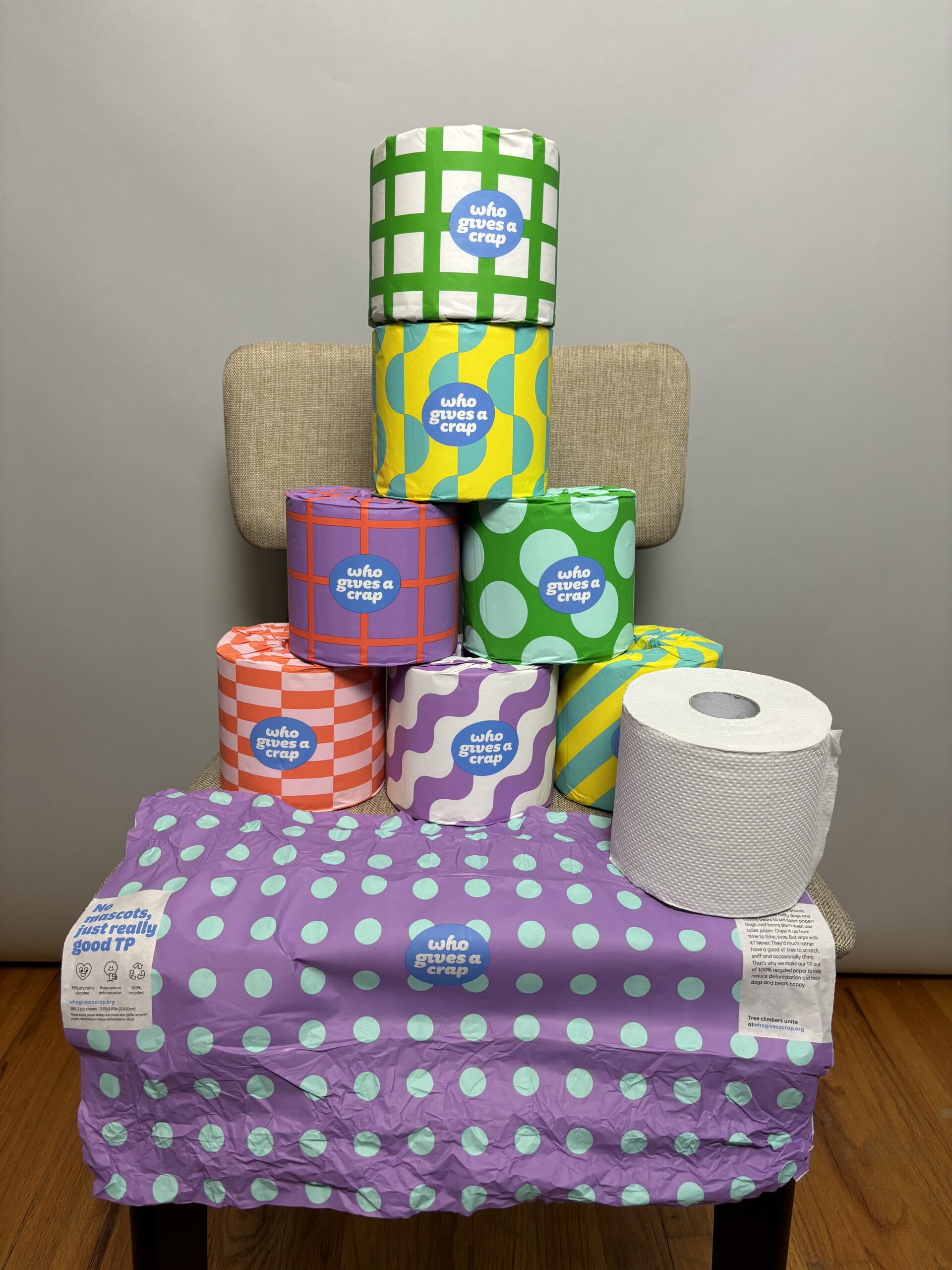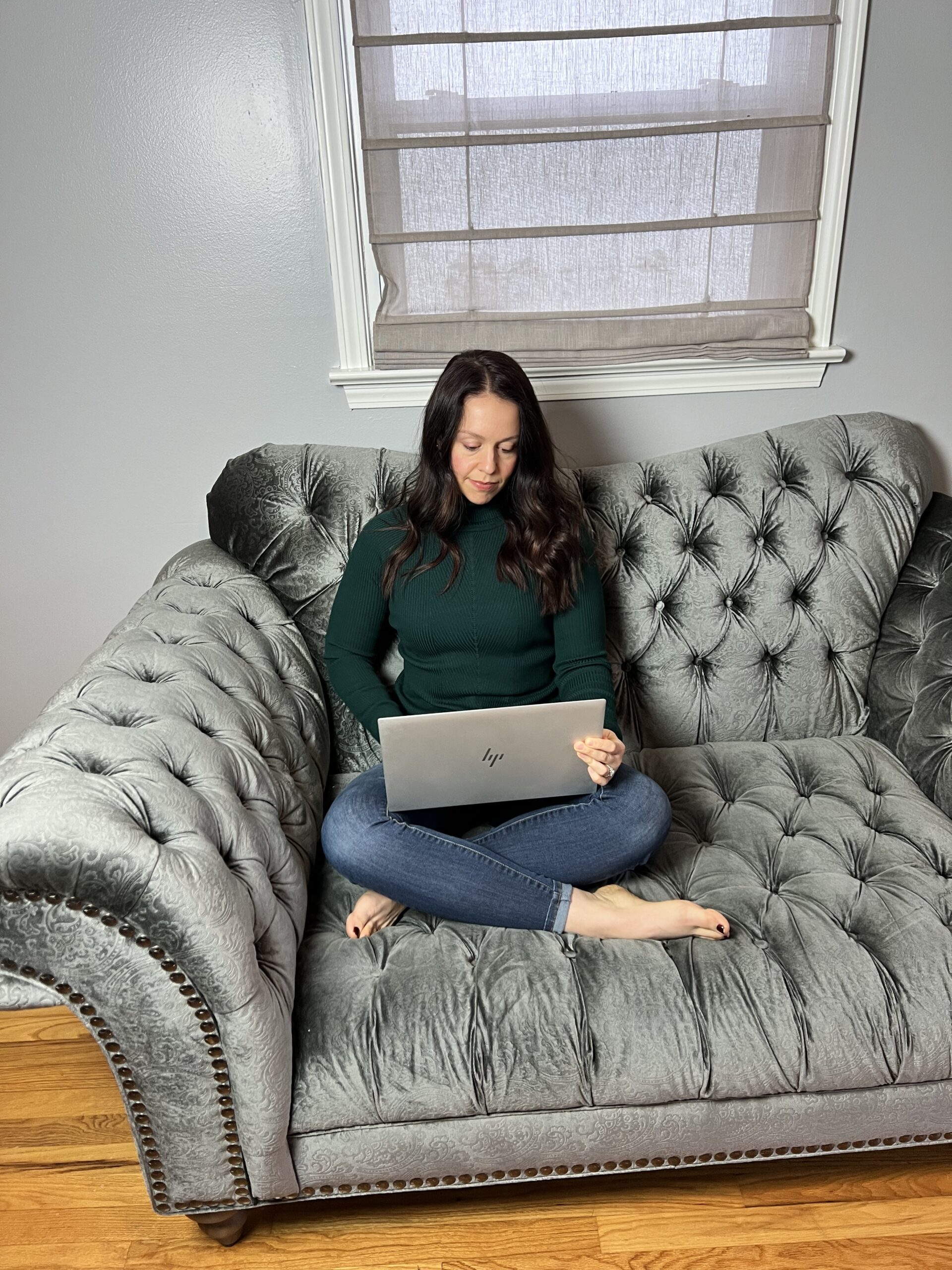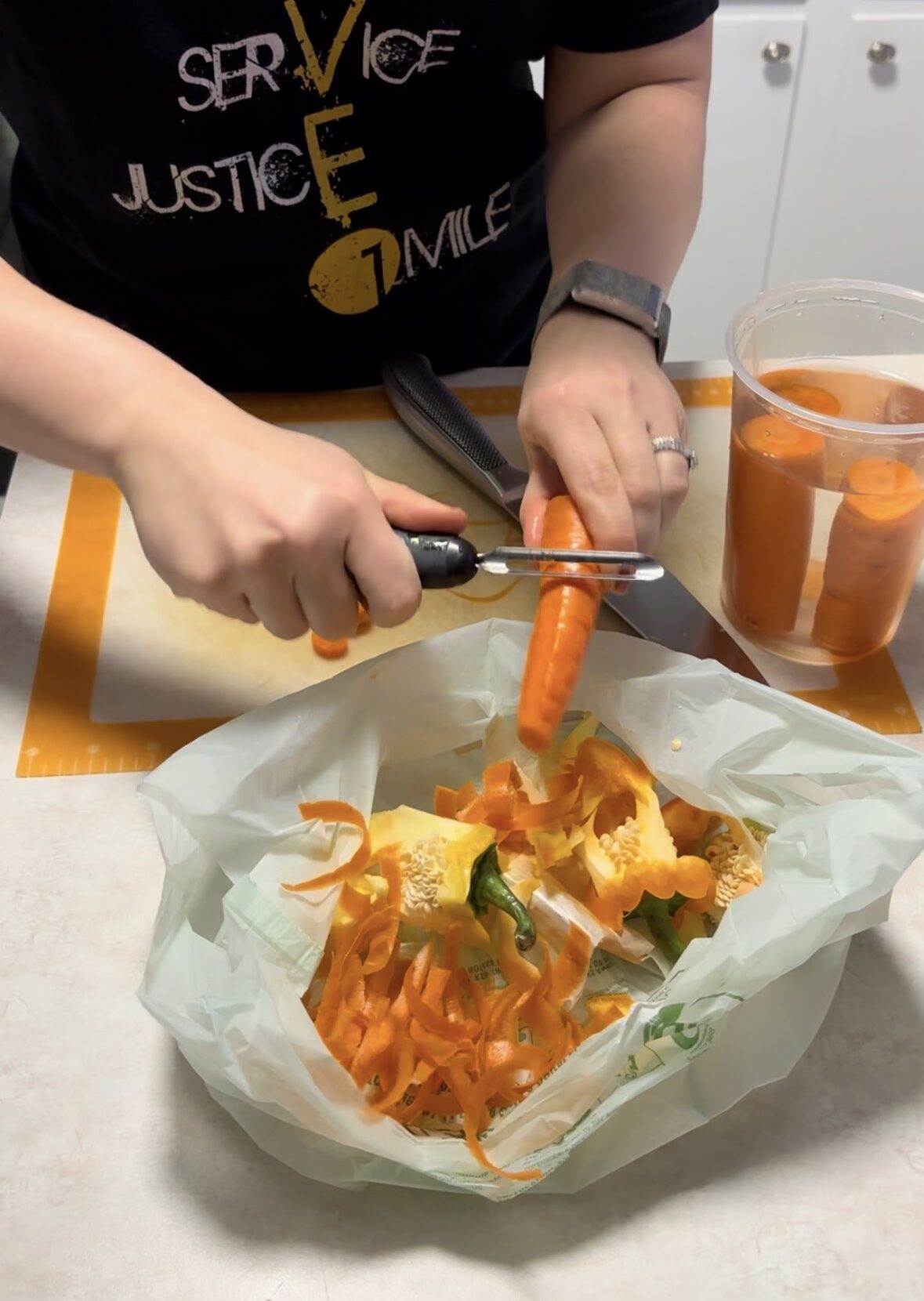It’s important to know where our waste goes!
No subject is off limits when we’re discussing our Responsible Journeys! Every aspect of our lives can affect our health and the environment around us. Today’s blog post is all about the toilet. We like to ignore waste because we don’t see the impact of it. We set our trash near the curb and it disappears, we never have to think of it again. Bodily waste is really no different. We flush it down the toilet, and we never have to think of it again. Even though we don’t have to think about our waste, there are plenty of other people who do. We must understand the implications of our waste to change it and do better.
Waste disposal methods
So where does it all go? Originally people could do their business almost anywhere and over time nature would take care of their waste. As the population grew, and especially as the population became more concentrated in specific areas, there became a need to manage the waste in a different manner. Today, there are two primary methods of disposal – a centralized wastewater treatment facility, which is most common in larger towns or cities, or a septic system, which is most common in rural areas and is specific to each household. Of course there are some exceptions, like if you’re backpacking in the wilderness without any facilities, or if you are in an area that uses latrines or outhouses.
Large-scale wastewater treatment
A centralized wastewater treatment facility allows for large-scale treatment of waste from many residential and commercial areas at once. Wastewater typically flows through two processes before discharge. The first process, referred to as primary treatment, is a process of removing solids from the water. This could be small rocks or grass that enter drains on the street, or it could be your human waste you flushed down the toilet. Essentially the wastewater enters a big tank that allows the solids to settle out on the bottom for easier removal. The solids removed in this step are usually dried and used as fertilizer (biosolids) or disposed of in a landfill.
The next process, referred to as secondary treatment, is to remove remaining organic matter from the water. Typically wastewater treatment facilities allow bacteria to break down organic matter, then disinfect water with chlorine to kill any remaining bacteria. Once these processes are complete, the water can flow back into a nearby body of water.
Small-scale wastewater treatment (i.e. a septic system)
A septic system allows for treatment of wastewater from your house. It works similarly to a wastewater treatment facility, except at a much smaller scale and taking advantage of naturally occurring processes in soil. Your septic tank performs the primary treatment as described above by allowing the solids to settle at the bottom in a sludge. The liquid then drains out slowly over time into nearby soil. The bacteria in the soil is what performs the secondary treatment step of further water purification by removing organic matter.
Natural wastewater treatment
If you’re out in a wilderness area, you may come across some other types of waste disposal. For example, if you’re in a national or state park, the park may have installed some pit latrines at the trailhead. The construction design of pit latrines prevents contamination of waterways. Latrines take advantage of the natural soil bacteria to decompose human waste. The pit latrine design leaches materials out slowly over time to allow the soil bacteria enough time to take care of harmful contaminants prior to reaching any waterways. They are also placed strategically to prevent them from being too close to drinking water sources.
If you’re super outdoorsy, maybe you’ve encountered situations without any access to a toilet. In this case, make sure you read up on the area you’re going to be in. Sometimes you can bury your waste, but sometimes you have to pack it out with you. It just depends on what is recommended for the specific area you’ll be spending time in.
What you flush matters regardless of the treatment method
Have you ever visited a friend’s house who had a septic system, or stayed in an Airbnb with a septic system? There’s a good reason for the signs that say “PLEASE don’t flush anything except toilet paper!!” Septic systems cannot handle anything besides human waste and toilet paper. If the system needs to be fixed, it’s pretty gross and can be expensive. Because we respect our friends or our Airbnb hosts, we (most of the time) follow instructions.
But large-scale wastewater treatment plants also are not designed to handle anything besides human waste and toilet paper. Since there is not a human asking you to please respect their piping and waste system, it’s easy to ignore this practice. It’s easy to see the toilet as a disposal system. But the truth is, there are humans working in the wastewater treatment plant. And they have to work harder, and their systems have to work harder, the more miscellaneous items we dispose of. It also puts our environment more at risk. Since the systems weren’t designed for tampons or pills or wipes, there’s a greater chance that these items get past the systems or ruin the systems.
Let’s go through some common items that people think are flushable, and the reasons we shouldn’t flush them.
- Feminine hygiene products. Truth be told, I thought tampons were flushable until I was in college… I always knew the plastic applicator was not, but why would the absorbable part not be flushable? Well, they are not! To be honest, even after I found out they were not flushable, I continued to flush them for a while. It was easier to flush them and not think about it than to deal with them. As I’m growing in my personal Responsible Journey, I now never flush tampons. I’m looking at upgrading to a reusable menstrual cup to further reduce my waste, but for now I wrap up my used tampons and they go in the trash.
- Pills or other drugs or medicine. It might seem like an easy way to get rid of items you no longer need, but please don’t flush these! Most pills will dissolve in water, and the wastewater treatment process cannot treat water with pharmaceutical drugs dissolved in it. This means the pharmaceuticals get discharged back to our waterways with the rest of the liquid phase.
- Toilet paper. In the United States and other developed countries, it is no problem to flush toilet paper. The piping and treatment systems are designed to carry and deal with toilet paper. Typically the toilet paper will disintegrate in the piping before it even makes it to the water treatment facility. However, some countries do not have systems designed for toilet paper. Greece, China, and many areas of South America do not have wastewater systems that can handle toilet paper, so it’s important to throw your toilet paper away in the provided trash can instead. If you normally flush your toilet paper it sounds a little gross, but it’s not that bad!

Toilet paper deforestation impacts
Speaking of toilet paper, there are a few more issues to talk about. 700 million trees are cut down each year (1.9 million each day) just to make toilet paper. The majority of toilet paper manufacturers use virgin wood fibers to produce toilet paper. This not only requires the use of freshly cut trees, but also a lot of chemicals to process the wood into toilet paper. This process of toilet paper production contributes to deforestation, which has a significant impact on the overall ecosystem. Removing trees also removes the ability of those trees to sequester carbon from the atmosphere and removes the homes of many native species, among other issues.
Better sustainable toilet paper options
To prevent deforestation for toilet paper production, there are a few things you can do.
- Check out Who Gives a Crap! This company was founded in Australia and they offer more sustainable options for your paper product needs. Personally, we use their 100% recycled toilet paper (they recycle used paper into toilet paper – it’s not recycled toilet paper!)Tthey also offer 100% bamboo toilet paper. Recycled toilet paper uses 50% less energy and 90% less water than the typical manufacturing process for virgin wood fiber toilet paper. As of 2023, WGAC manufactures 100% recycled toilet paper in the US which decreases the transportation costs. Bamboo in general is more sustainable than wood due to how quickly it grows to harvest, so it can be another good option if you’re not a fan of recycled toilet paper. WGAC even has a toilet paper subscription option so you never have to worry about running out! One of the best things about WGAC is that they donate 50% of their profits to WASH (Water, Sanitation and Hygiene) organizations that are working to help ensure clean water and toilets are a norm around the world! While I have not worked with these organizations myself, WGAC considers all the right things as they’re choosing the organizations they want to partner with. If you want to check out WGAC, this link will give you $10 off your first order!
- Install a bidet. If you’ve traveled to certain countries in Europe or Japan you may have experienced using a bidet before. They are gaining in popularity in some other places as well. In fact, my sister-in-law has them at her condo! If you’ve never heard of a bidet, it’s essentially a way to clean yourself with water instead of toilet paper. You could purchase a bidet as an add-on to your current toilet or you could purchase a toilet and bidet combination. The price range is really wide, from less than $50 up to $5,000 so you can choose one that fits your needs and your budget. It’s a way to almost completely eliminate your use of toilet paper which is the most environmentally friendly option!

Toilet water impacts
Water use is another important consideration when thinking about sustainability in the context of your bathroom. If you have an older toilet, it could be using up to six gallons of water every time you flush. Newer and more standard water efficient toilets today use 1.6 gallons for each flush. The best of the best “WaterSense” certified low flow toilets by the EPA use only 1.28 gallons for each flush. Of course it doesn’t make sense to immediately replace all of your toilets, but if you are remodeling a bathroom or are looking to replace a toilet anyway, check out the “WaterSense” certified options to reduce the amount of water used with each flush.
You could also consider not flushing every single time you use the restroom – as my favorite water calculator website says, “if it’s yellow, let it mellow”! If you have hard water (water with a high mineral content) it can create rings on the toilet that are hard to clean over time. This is dependent on the type of water you have, and how long or how often you “let it mellow.” I would recommend thinking about your house specifically before you “let it mellow” all the time!
Composting toilets
If you’re really looking to reduce your water use, you could also consider a composting toilet. A compost toilet helps speed up the decomposition of human waste so that it can be used in the future as compost. While I have used a composting toilet once in an Airbnb, I’d recommend reading more about it from an expert prior to making a decision.
Can you recycle wastewater?
While it’s easy to pretend that our waste just disappears completely and perfectly, it’s good to understand how modern day waste systems work. It allows us to make better and more informed choices that will have a positive effect on our communities. One last thing I’ll mention is the idea of recycling wastewater. The amount of water on earth will never change, and as the global population continues to increase, we must consider alternative ways to increase our clean water supply.
In “The Big Thirst” by Charles Fishman (affiliate link), he explains how Las Vegas has continued to get creative with their water use. For instance, each household has a purple pipe which contains recycled and cleaned wastewater. The “purple pipe water” is for watering gardens or washing cars. Fishman also recounts a story from Australia where a community refused to use purified wastewater to help supplement their standard drinking water source. I know, I know… it sounds really disgusting. But water is water is water. With the right purification methods and test methods, your urine can easily become drinkable.

Maybe we aren’t there yet as a human population, but maybe it’s time to start considering the idea in some areas of the globe without a plentiful water supply. I’d encourage you to read Fishman’s book to better understand how we use water today, and to continue on your learning journey to think outside the box when it comes to sustainability.
A more sustainable toilet
Talking about taboo topics like the toilet can be awkward… but I think it’s our responsibility to understand topics like these so we can make the best choices for ourselves and our nearby communities. As a reminder, the three best things we can do to make a positive impact from our toilet are…
- Don’t flush anything except human waste and toilet paper (in the United States).
- Check out alternative toilet paper options, whether it’s recycled, bamboo, or a TP-less bidet!
- Save water – if it’s yellow, let it mellow! Remember to check your water hardness and evaluate if this is something that will work for your household first.
SOURCES:
- https://drive.google.com/file/d/1IOBDcixSgD5Lgz2gT3UmPb0i4EIvI4bs/view
- https://blog.whogivesacrap.org/home/goodnews/what-is-wash
- https://blog.whogivesacrap.org/home/gooddeeds/how-we-choose-our-partners
- https://www3.epa.gov/npdes/pubs/centralized_brochure.pdf
- https://www.livescience.com/where-does-poop-go.html
- https://www.blm.gov/recreation/utah/when-nature-calls
- https://www3.epa.gov/npdes/pubs/bastre.pdf
- https://www.epa.gov/nutrientpollution/sources-and-solutions-wastewater
- https://www.sciencefocus.com/science/what-happens-to-toilet-paper
- https://www.travelandleisure.com/travel-tips/travel-etiquette/bathroom-etiquette-around-the-world#:~:text=Some%20places%20have%20narrow%20pipes,or%20use%20a%20bidet%20instead.
- https://www.epa.gov/septic/how-septic-systems-work
- https://wedc-knowledge.lboro.ac.uk/resources/booklets/G023-Latrine-pit-design-online.pdf
- https://www.epa.gov/watersense/residential-toilets#tab-1
- https://compocloset.com/blogs/resources/what-is-a-composting-toilet?gad_source=1&gclid=CjwKCAjwkJm0BhBxEiwAwT1AXLx6uTnFn3kXZlOUSoh2SNUyQXqksMJa3Yxc0djE4Tx6JexS7ikYnhoCgnMQAvD_BwE
- https://www.leafscore.com/eco-friendly-bath-products/flushing-the-toilet-and-the-environment-fact-vs-fiction/
- The Big Thirst, Charles Fishman







